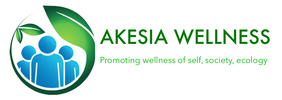Modalities
Tai Chi and Qi Gong
A growing body of carefully conducted research is building a compelling case for tai chi as an adjunct to standard medical treatment for the prevention and rehabilitation of many conditions commonly associated with age. It differs from other types of exercise in several respects. The movements are usually circular and never forced, the muscles are relaxed rather than tensed, the joints are not fully extended or bent, and connective tissues are not stretched. Tai chi can be easily adapted for anyone, from the most fit to people confined to wheelchairs or recovering from surgery.
Yoga and Ayurveda
Yoga is a healing system of theory and practice. The purpose of yoga is to create strength, awareness and harmony in both the mind and body. The relaxation techniques incorporated in yoga have been known to lessen chronic pain, such as lower back pain, arthritis, headaches and carpal tunnel syndrome. Yoga has also been scientifically proven to lower blood pressure and reduce insomnia. Published reviews of a wide range of yoga practices suggest they can reduce the impact of habitual responses to stress and may be helpful for both anxiety and depression.
Meditation
Though meditation is usually recognized as a largely spiritual practice, it also has many health benefits. In addition to the multiple and varied health benefits, meditation techniques are being implemented in management of life threatening diseases; in coping with mental illnesses, in accelerated learning programs, in problem solving problems and conflict resolution.
Dance/Movement Therapy
Dance/movement therapy holds the belief that the body and mind are connected, they are one. How we move, feel, sense, and relate in and through our bodies directly affects our minds and the thoughts, attitudes, beliefs we entertain in our minds directly affect our bodies. Using movement for self-experience/expression, healing, and integration of body and mind relies on bodily-based processes including movement, stillness, breathing, posture, gesture, vocal sounds, arising of sensation, and awareness. Dance contributes rhythm, ritual, nonverbal communication, artistic/creative expression, and personal and collective meaning making. We all have a need to be embodied, to know,understand and trust our bodies, and to be seen. Dance/movement therapy can be a rich and primary resource for a wide range of people.
Art Therapy
Art therapy is a form of expressive therapy that uses the creative process of making art to improve a person’s physical, mental, and emotional well-being. The creative process involved in expressing one’s self artistically can help people to resolve issues as well as develop and manage their behaviors and feelings, reduce stress, and improve self-esteem and awareness. “Art as therapy” embodies the idea that art making is, in and of itself, therapeutic and that the creative process is a growth-producing experience. It has been known to to support, maintain, and improve the psychosocial, physical, cognitive and spiritual health of individuals of all ages.
Breathwork
We don’t often think of breathing as being integral to our sense of well-being. Through the practice of conscious breath control, our breathing becomes more relaxed and natural, which has a clearing and calming effect on the mind. This clarity and peace within the mind is open to everyone…
Reflexology
Reflexology is a therapeutic method of relieving pain by stimulating predefined pressure points on the feet and hands which correspond to different organs and muscle groups in the body. This controlled pressure has been known to relax tension, improve circulation, and support normalized function in the related area of the body. In the absence of any particular malady or abnormality, reflexology may be as effective for promoting good health and for preventing illness as it may be for relieving symptoms of stress, injury, and illness.
Accupuncture
Acupuncture is a component of the health care system of China that can be traced back at least 2,500 years. The general theory of acupuncture is based on the premise that there are patterns of energy flow (Qi) through the body that are essential for health. Disruptions of this flow are believed to be responsible for disease. Acupuncture may, it has been theorized, correct imbalances of flow at identifiable points close to the skin.
Hormone Balance Therapy
In today’s toxic environment, more men and women experience symptoms of testosterone deficiency, hypothyroidism, and other metabolic imbalances. When your endocrine system is rebalanced, you’ll enjoy higher energy levels, clarity of thought, increased muscle mass, and enhanced sexual function, as well as critical protection from age-related chronic diseases.
Myoskeletal Alignment
Myo: A prefix denoting a relationship to muscle. Skeletal: Of, relating to, or functioning as a skeleton. An integrative perspective on pain management in the human body correcting joint deficits of the pelvis, knee, hip and foot, which all influence proper spine function.
Naturopathy
Naturopathic medicine is an approach to health care that uses natural, non-toxic therapies to treat the whole person and encourage the self-healing process. Naturopathic clinicians treat a variety of conditions, including digestive issues, respiratory conditions, chronic fatigue syndrome and cancer.
Yamuna Ball Therapy
This process of opening restricted spaces in the body affects the mind and body from head to toe. Whether one seeks relief from pain and structural problems or simply a healthier stress-free body, Yamuna Ball Rolling provides a complete neuromuscular re-education of and for the body and mind.
Homeopathy
According to the World Health Organization (WHO), homeopathy is the second largest system of medicine in the world. Homeopathy is a safe, gentle, and natural wellness system that focuses on the entire individual to relieve symptoms, restore balance, and improve overall health, rather than focusing on a particular illness in isolation as is often the case in allopathy. It recognizes that each person exhibits his or her disease in a unique and slightly different way, and unlike the “one size fits all” approach often used in conventional medicine, a homeopath chooses a remedy that matches the unique symptom profile of the individual. It has drawn universal admiration from unbiased allopathic practitioners and successfully treated millions of patients worldwide.

